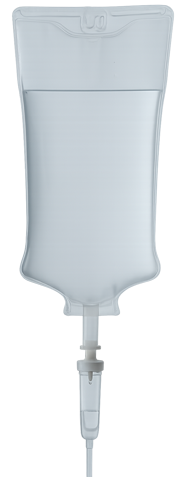By: Amy (Friedy) Guttman-Singer and Evelyn (Roizy) Guttman (HandsOnOT)
It’s a scene we’re sure you’ve witnessed again and again. A family is sitting in a restaurant having dinner. The four year old is clearly fed up with sitting, and starts to complain, jump on her seat or run around. But a few moments later, she’s quietly in her seat again, enabling her parents and older siblings to enjoy a peaceful meal and conversation for the next 30 minutes. What happened? Her father handed her his iPhone. It’s a scene we see repeated in doctors’ waiting rooms, supermarkets, public transportation… and while we entirely understand it, it also saddens us. So many caring, well-meaning parents are unaware of the developmental damage caused to their children by exposure to screen time and screen media.
Screens – Televisions. Computer monitors. Tablets. Smartphones. Dumb phones. Children’s toy computers. Kindles. The Apple watch. If it gives off electromagnetic radiation in the visual spectrum, it’s a screen. In many ways screens have changed our lives for the better. In other ways, they’ve changed our lives and the lives of our children – and not necessarily for the better.
The original official policy of the American Academy of Pediatrics (made in 1999 and reaffirmed in 2011) states that “pediatricians should urge parents to avoid television [or other media] viewing for children under the age of two years.” Children between 2 and 5 should be limited to “no more than 1 hour per day.” In 2016 they issued a policy adjustment stating that pediatricians should discourage any media use under the age of 18 months, except for video-chatting (as often happens with far-away relatives). Between 18 and 24 months, if a parent wants to introduce screen media, then they should choose high-quality apps and use it together with their toddlers. (Although the policy indicates that the educational benefits for children under the age of 24 months are low, and come mainly from parent interaction with the child, and not from the media itself.). While the original policy of the AAP called for children older than 5 to be viewing no more than 2 hours of media daily, the update 2016 recommendations explains that in today’s world, when media is everywhere, a one-size-fits-all approach doesn’t work. Families need to make themselves aware of the risks and benefits of media use, and create individualized plans for their children, including enough sleep and physical exercise.
Reasons given by the AAP – and other research studies – include associations with obesity, sleep issues, aggressive behaviors, less time spent in developmentally helpful interaction with parents and siblings, language delays and attention issues. Reference is made to the potentially harmful effect of media exposure during the rapid brain development period of age 0-2, but most studies – and even the AAP policies – don’t delve into the details of the impact on your child’s brain.
We’d like to give you a peek behind the scenes, and show you what happens to the brain when it’s in the process of viewing screen media.
Screens Give Your Body the Blues
We’ve all been fooled by the “what color is white light?” question. Answer: all of them! Natural daylight, provided by our sun, is made up of all the colors of the visual spectrum, although there does tend to be a little more blue light emitted than the other colors.

The blue light of natural sunlight does some great things for our body. It boosts attention, reaction times and mood, and it suppresses melatonin (the hormone that regulates your circadian rhythms and makes you sleepy when it increases) so you can be awake and alert during your active hours. That’s great for your body – in the daytime. When your body is supposed to be winding down for sleep, however, it’s another story. Most of today’s devices are illuminated by LEDs, which have a much higher percentage of blue lightwaves than any other light source – natural or artificial. Here’s what “white” light is really made of in the following artificial light sources:

(The above image comes from the Molecular Vision Journal. The markup is our own.)
White LEDs are almost entirely blue light, combined with a chemical compound to make it look white. Night-time exposure to LED-illuminated devices (most of the screens out there today: computers, tablets, phones, flat screen TVs, e-readers, video games) suppresses melatonin and disrupts the natural sleep cycle. A Scientific American article describes a study where volunteers spent several evenings reading for a prolonged period of time before a 10PM imposed bedtime. Some used printed books and some used e-readers. Those who used e-readers took longer to fall asleep, had less REM sleep and felt sleepier and less alert for hours after they woke up in the morning – even if they had gotten the same amount of sleep.
We repeatedly see sleep cycle issues in the children who come to our clinic. When we probe, we almost inevitably hear that they’re playing video games, using social media or watching TV for an extended period before they go to bed. Sleep cycle disruptions are a siginificant contributor to ADHD and other mood and behavioral issues. One of the first things we work with these parents and children on is significantly reducing screen time before bed. Blue light – it’s not for night!
Fast Forward
Okay, fine, you might be saying. I’ll curtail the screens at night, and let my children play their video games, use the computer and watch TV in the afternoon. We wish it were that simple. If your child’s screen use is focused on reading chapter books off a Kindle or typing in a word processing program, no problem. (Again, as long as it’s not at night when the blue wavelengths in the white LEDs will impact sleep patterns). But who among our kids spends his primary media time doing that? Our kids are playing fast-paced video games, watching cartoons and TV shows with plenty of action and jumping from photo to chat to status update on social media.
The rapid-fire changes that happen in most screen activities, from video games to recorded entertainment to social media updates, affect two parts of the brain: the visual processing system and the vestibular system
The Eyes Have It
Let’s discuss the visual processing system first. The faster the changes in the sensory information you’re taking in, the faster your brain needs to process it in order to keep up. If the pace required is so fast it exceeds your brain’s threshold, you may experience sensory overload. That’s the “STOP! TOO MUCH! I CAN’T TAKE IT ANYMORE!” feeling – the one we sometimes get when we’re trying to cook dinner AND our baby is screaming and smelling like a horrendously dirty diaper AND our 3 year old is yanking on our shirt hem and whining he’s hungry AND our 6 year old is shoving a drawing in front of our eyes and yelling, “Look, Mom! Look at it!”
Too much to process. Shut down. Good night. (Well, we wish. We parents usually have to recover pretty fast in situations like that.)
The rapid-fire changes on typical screen entertainment are much faster than the typical visual changes of ordinary, unscreened life – the visual changes that our brain has been wired over the millennia to deal with.
Yet these rapid changes don’t often cause perceptible visual sensory overload. They usually come in just under the threshold. The child can keep up with the processing, but their brain is working super-fast to do so.
Often parents of children with ADD/ADHD diagnoses will tell us, puzzled, “I don’t understand. My child has trouble focusing on most things, but when it comes to TV or video games, I can’t get him to stop. I can wave my hand in front of his face, touch him or say his name loudly and it’s like I’m not there. He seems super-focused!”
And he is. Children (especially with ADHD) often get into a state of hyper-focus, because their brain is so super-busy processing all the fast-changing visual information. This hyper-focus affects children more than adults (and in younger children more than older children) because the visual system itself is still developing, so the younger a child is, the more they have to focus in order to deal with all the information coming in. Eventually you pull them away from the screen. And pandemonium breaks loose. If they were super-focused before, they are now super-UNfocused. They’re hyper. They’re acting out. They’re in an awful mood. What HAPPENED?
Coming off the Visual Fast-Track
Your child’s brain was in super-fast, super-busy mode, processing all that visual stimuli. Suddenly all that visual stimuli stops. There’s nothing left to process. But the brain is still in super-fast, “hyper” mode. Until it readjusts to real life and a normal pace (which takes time), your child will be bouncing off the walls in an unconscious attempt to find stimuli moving at the artificially fast pace of his brain.
That’s not all. The visual system is closely linked to the vestibular system – the sensory system that controls balance and your perception of where your body is in space. The vestibular system also has a significant impact on mood. The perception of linear, acceleration is calming (as most of us have experienced when rocking, swinging, walking or driving a cranky baby to sleep) and the perceptional of rotational acceleration is arousing. When your child’s visual system was super-busy processing, it locked up the vestibular system, putting mood on an artificially even keel. Remember your child’s lack of response when you waved your hand in front of his face? He wasn’t in a bad mood; he wasn’t in a good mood; he was in NO mood. Now his vestibular system has been released from its freeze, and it’s having just as hard a time readjusting. Mood swings, anyone?
Let’s take a look at how to get your child from screen time back to real life without crashes and meltdowns.
Jump My Sillies Out
When you end your child’s screen time, don’t just let her chill out. Because she WON’T be chilling out. She’ll be jumping out of her skin.
To reset the pace of her body and brain, jump her back INTO her skin. Use the vestibular system. Get your child moving. Jump, swing, run around. The linear acceleration will reset the vestibular system and calm the entire body. This is even if your child has had “active” screen time, like working out with a Wii or playing Pokemon Go or some other augmented reality game. They may be getting exercise, but they’re also overstimulating their visual processing system. The screen offsets the vestibular benefit of the movement, so you’ll still need some “unplugged” movement in order to reset the vestibular system and get the body back on track.
Long-term Consequences
Using physical activity is a good short-term technique to reset the vestibular and visual system and get your child back into normally-paced life more smoothly. As a long-term strategy, it leaves much to be desired. As we mentioned above, a child’s visual processing system is still significantly developing before the age of 2, and final development isn’t reached until 8 or 9 years old. It’s still unclear exactly what the effects of media exposure with its rapid-fire changes are for a developing system.
There is a concern, however, that repeated incidents of super-busy processing during stages of development could cause permanent changes in the processing pace that the brain seeks. Your two-year old could potentially grow up feeling “comfortable” in the super-fast pace of screen media stimulation and uncomfortable in the normal pace of everyday life.Her performance might be high in gaming and internet information processing, but what about performance in low-tech activities such as building relationships? Parenting? Achieving greatness at anything, from sports to music to business? These true, satisfying achievements happen only at the pace of the natural world, not at the artificially accelerated pace of the screened world. They require focus, dedication, persistence and patience – even when the going seems slow, frustrating and boring in the moment.
Set Your Child Up for Success
We appreciate how much parents want to give their child the tools and resources to achieve the most they can. That’s why it pains us. Because while the parent thinks they’re doing something positive – or at least neutral – for their child by setting them in front of screen media, they’re actually interfering with the child’s natural, healthy development. The younger the child is, the greater the interference and future consequences.
Why set a child up for issues and limitations that may or may not be conquerable?
Why put a child on track for difficulties in life from age 2?
We work all the time with children to enable them to overcome behavioral and emotional limitations caused by processing issues, so they can have a happy, functioning life full of achievement and satisfaction. You, as a parent, have an even more powerful role to play. You can give your child the best shot at that life from the outset, and minimize the chances of needing external intervention. As a caring, dedicated parent, we know you want it. And you can do it.






